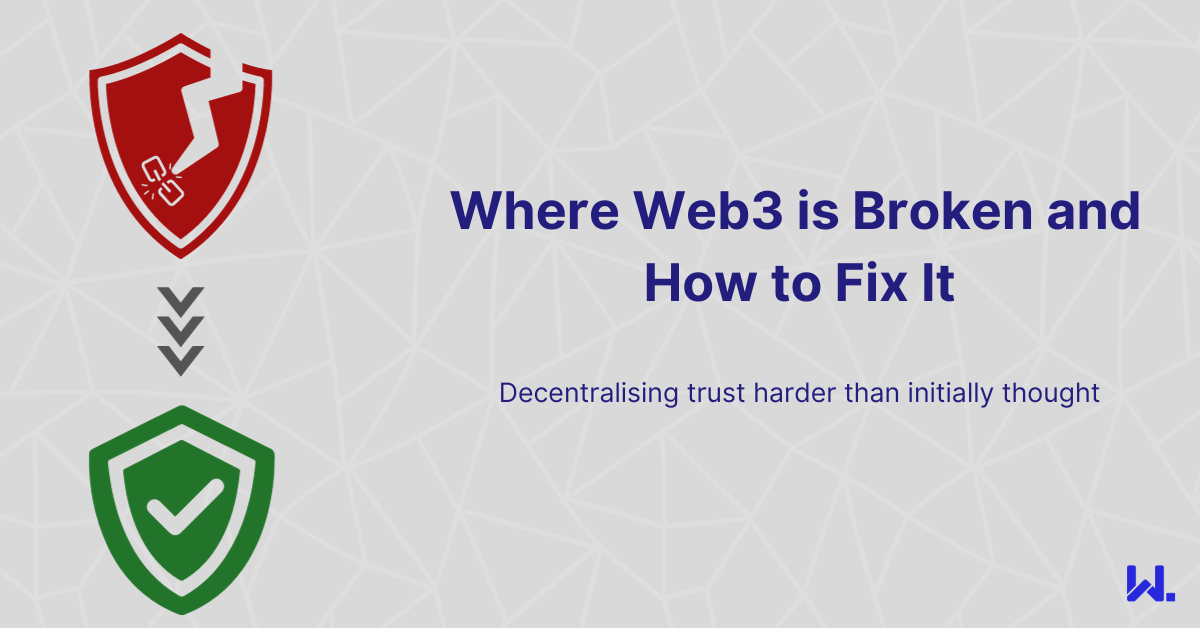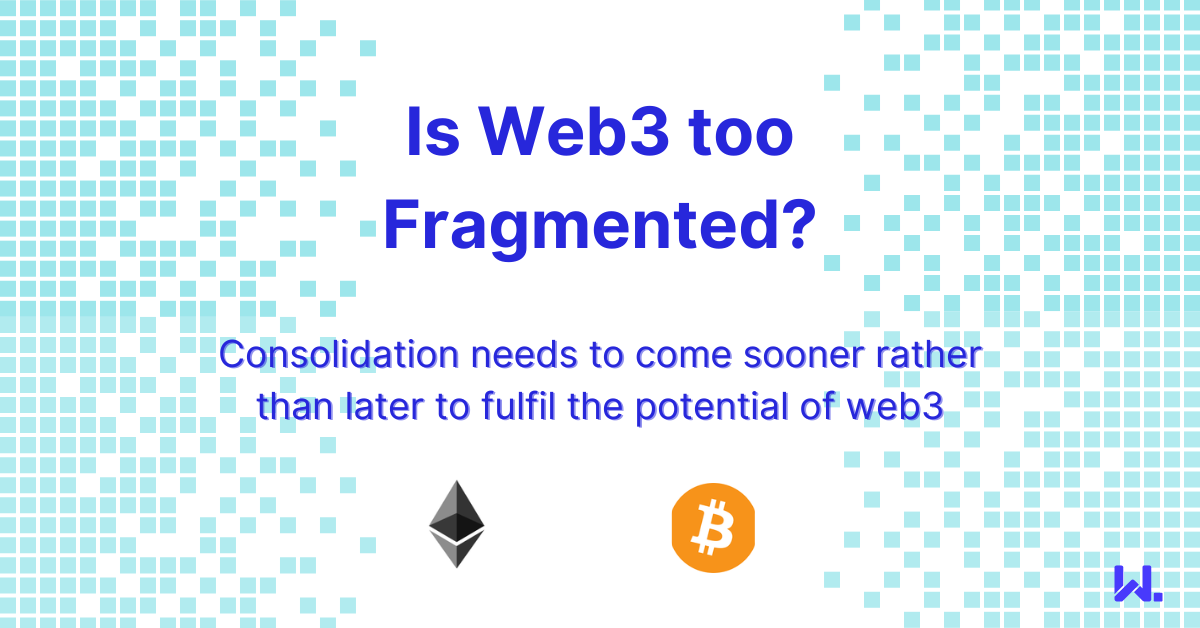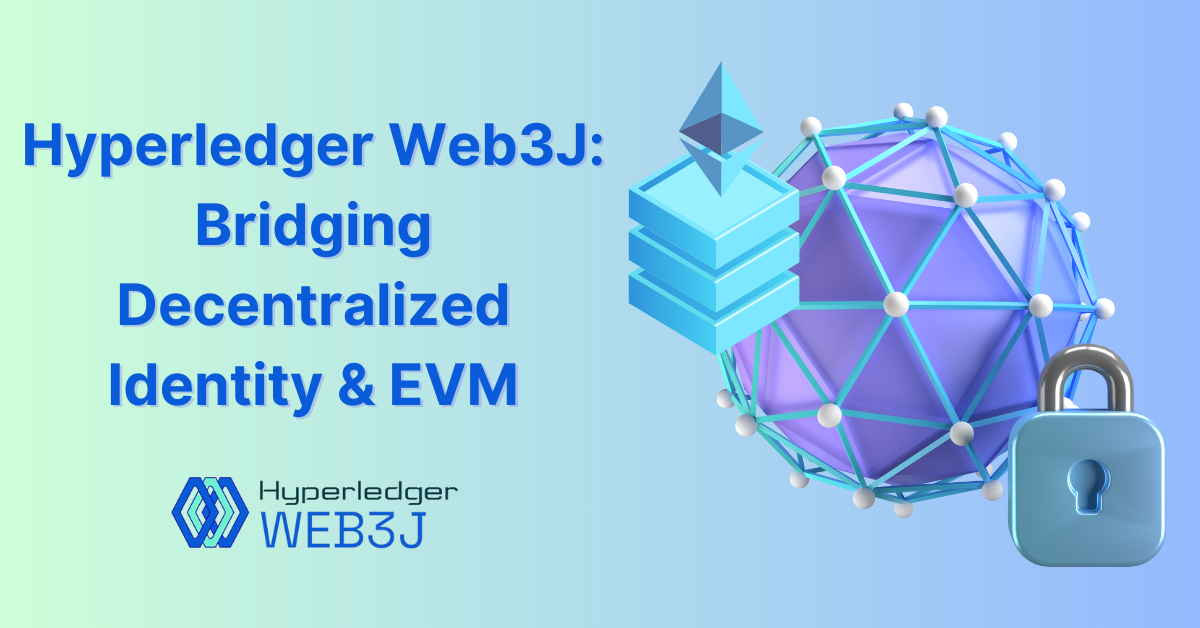One of the goals at the heart of web3 has always been to create a decentralised internet, which is not controlled by incumbents. We had this with the World Wide Web, however, during the rise of web2, it became somewhat more centralised — controlled by large entities such as Google, Facebook and others that became the jumping-off points for a lot of activity.
Web3 is meant to offer a different path as it has a built-in incentive mechanism for internet protocols — the token. The first iteration of the web didn't offer an incentive for its users in this respect. Hence, many web3 communities believe that tokenised incentives will help us avoid the same fate of centralisation that happened to the first iteration of the web. This idyllic outcome appears less realistic in my view, in part due to classic human weakness — greed.
Instead, projects should be focusing on tokens for established real-world assets and issuing security tokens to value their project.
A tale of three tokens
Fungible tokens in web3 projects usually fall into one of three categories:
-
Utility tokens
-
Governance tokens
-
Security tokens
Utility tokens provide utility for their holders on a specific blockchain network or protocol. Paying Ether to transact with the Ethereum network is one example.
Governance tokens provide holders with the right to participate in the governance process of a network or protocol, often via a DAO. The Ethereum Name Service (ENS) or Uniswap tokens are examples of this.
Finally, security tokens are like traditional securities. They represent investor shareholdings in a protocol or project and can potentially yield dividends, and their value is tied to the valuation of the underlying project.
As the security industry is tightly regulated by various financial regulators, creating security tokens is a potential minefield for many projects and they have yet to become a prominent feature of web3.
The creation of each of these types of tokens has evolved from well-founded intentions by projects, where the creators have a sensible rationale for creating them.
Unfortunately, the impact of speculators and bad actors in web3 has meant that many of them do not function in the way they were originally intended.
A Wild Epidemic of Dumbness and Overweening Greed
The initial coin offering (ICO) process undertaken to launch the Ethereum network was effective as a fundraising mechanism to bootstrap the network. It was so effective that it was replicated creating an ICO bubble a few years later. This bubble highlighted the skewed incentives between web3 projects and investors — projects need funds to bootstrap and turn their vision into a reality, and investors want to see the largest possible return on their investment.
This meant that it was in the investor’s interests to create as much hype as possible about a project, enabling them to realise a return on their investment as early as possible.
The speed with which profits could be made during the ICO boom was immense, which meant huge amounts of capital flowed into projects from professional investors, who would end up dumping their holdings on retail investors who often didn't have the resources or knowledge to get into the projects early.
The irony is that many of these tokens were marketed as utility tokens — tokens that are intended to be used to pay for decentralised services on a network or project.
Where you have a decentralised network the utility tokens make sense. There needs to be a mechanism to incentivise network node operators and for users to pay to use the network. If you don’t want your network tied to a specific jurisdiction, it can make sense to create your own currency.
However, simply bootstrapping a decentralised network is hard. Especially when you don’t have a first-mover advantage. Investors in the network token are effectively purchasing block space on the network that they believe will be worth more in the future than it is now.
With staking, they gain the additional benefit of being able to help secure the network. Depending on their motivations this may be a service they wish to undertake as opposed to speculating on the price of block space.
Provided you can create sufficient demand for your network in the form of active users, this model of selling block space is an effective economic model for blockchain networks.
A similar model is used for decentralised applications or protocols, where the purpose of the utility token is to pay for a service that the project provides. The theory is that when the project has built out its service, people will use the project token to pay for it over traditional currencies as this is the way of web3.
Unfortunately, this is where the theory and reality start to diverge.
A question of scale
Base layer blockchain networks such as Ethereum are intended to be a global, internet-scale blockchain networks. As the network is global and not run or owned by anyone, the utility token that underpins it makes sense. Ethereum has the scale and reach that it could not exist without a token.
It needs the neutrality of not being tied to a specific entity or geography to fulfil its goals. Unfortunately, whilst many projects in web3 may have similar ambitions, without achieving a comparable scale there is little point in having a utility token tied to them.
For many projects in web3, their utility token is treated as a security token by their holders. It can't be a security token, as several regulators such as the SEC and CFTC wouldn't like this, but the projects don't have functional economic models for their projects.
That's not to say they don't have a theoretical model, it's that the price of their token doesn't reflect the revenues being generated by their project. Instead, it's a valuation that web3 investors are willing to trade at.
The result of this is that utility token economic models are largely broken. To provide context on this.
Imagine I created a decentralised car-sharing platform, like Uber, but decentralised. Let's call it Duber. Instead of accepting payment in fiat currencies like Uber, I issue a token DUB. You can use DUB to pay for your rides.
The Duber team decided to do a pre-sale to investors for DUB tokens, for $0.10 per DUB. The team raised $10m by issuing 100m DUB tokens this way, with the intent of there being a further 900m DUB taking the DUB treasury up to 1bn tokens with an implied protocol valuation of $100m.
They then get building Duber, and do another round of token pre-sales, this time 50m DUB tokens at $0.20 per DUB doubling the valuation to $200m.
Duber is subsequently launched and gains traction. Users start purchasing its DUB tokens to pay for services. A percentage of each ride fee is paid to the Duber treasury.
The problem is, with the growth of Duber, its token price increases, resulting in the service becoming more expensive for users.
This is great for investors, whose DUBs are gaining value, but not good for its users whose rides are becoming more expensive. Duber could decide to lower the price of rides in line with token price increases, but then not as many funds will go to the Duber treasury, which not everyone is happy about.
This is then compounded when one of the early investors in DUB tokens decides to dump their holdings, selling their tokens at $10 for a 100x return on investment. The DUB token price tanks and again the economics for users need to change to avoid DUB rides being too cheap.
This is one of the challenges at the heart of the classic token model for protocols — utility tokens are used by investors who are incentivised by growth, but their core services are also paid for using these same tokens.
There needs to be a separation between the two. It is better to have a service that can be paid for using regular currencies via stablecoins or widely used cryptocurrencies instead of their token. It would be equivalent to Amazon, Microsoft or Google requiring that you pay for their cloud services using shares in the respective company.
Many web3 protocols should be viewed like regular businesses. It’s fine to utilise crypto technologies for paying for their services, but there should be a clear separation between the user-centric digital assets they accept payment via to provide their core service, and assets that are investor-centric and represent their profitability as a commercial enterprise.
This distinction appears to be lost on many projects in web3, and as a result, we have utility tokens that are part utility tokens, part facade. And governance tokens that allow holders to have a say in protocol governance, but no access to a yield or return based on the success of the project itself.
Having a framework to support security tokens would greatly help here.
The reality is that many protocols’ economic models do not work. They are not generating real revenue. Leading protocols are exceptions, ENS, Uniswap, and stablecoins like USDT and USDC, but many networks and applications are dictated by their token price over their revenues. This is where web3 is broken.
The majority of people in web3 right now are speculating on tokens, DeFi protocols and NFTs. They are not using these assets for utility. This results in high amounts of volatility for these assets. No person paying for a service wants or needs this.
The product market fit illusion in Web3
It's not only price volatility that is a problem here. The explosive growth in the price of cryptocurrencies and tokens in web3 has resulted in several projects and teams sitting on large token treasuries (although these are down from their highs a couple of years back). Having this capital is good for preserving the runway, but not good for motivating the original vision. Startups should be scrappy in their formative years, experimenting and pivoting to try and find product market fit. Once that fit is found, the engine for growth turns on and problems of scaling emerge.
It's never an easy journey to get money in the bank, but successful tokens have alleviated this problem for a subset of web3 projects. They may be cash-rich, but likely revenue-poor.
Launching a token is a fantastic way for projects to reach this point. Teams are happy that they have money in the bank, and investors are happy as they can cash in, but a functioning business is not the outcome.
I fear this is one of the reasons why many people and projects launch new blockchains — it is an easier story for investors to get a return on, than an experimental application that has the potential to onboard more users to web3.
Herein lies the problem.
More real-world assets
The blockchain rails that have been built underpinning web3 are incredible feats of engineering that will change many parts of our world. But, instead of creating brand new currencies and assets, we need teams to focus on creating familiar assets on these platforms.
Assets that people understand such as fiat currencies, securities or ETFs. Or assets that are modelled on existing digital assets such as those used in video games, or stored in Apple or Google phone wallets.
These assets should be priced for everyday people, and where there is an element of speculation associated with them, the reason shouldn't be "because web3 is the future", but because the underlying asset they represent has utility in our world.
Because many web3 communities have a token, many participants end up using the token price as a metric of success. It's natural that if you're rewarded with something for free, a token provides an incentive for your work.
This can affect the trustworthiness of web3 communities. If the token price is the metric of success being used, the motives of a project will be to do to what is best for the price of the token first and, for users second.
A traditional business relies on profiting from providing a valuable service that people are willing to pay for. In a decentralised project if they have a valuable token, protecting the token price is more important than developing a service that people are willing to pay for.
This can mean that a web3 project is not focused on its end user as much as it should be.
When this is combined with the inability to create security tokens due to regulatory red tape, we find ourselves where we are now. Where most web3 assets are not suitable for everyday people.
Many of the native web3 projects have failed everyday people in this regard. The main users of web3 are speculators in developed nations trying to get rich from the technology, and those who are forced to use the technology as native digital assets such as Bitcoin are safer than their sovereign currencies.
The willingness of investors to invest in projects creating tokens facilitating a quick return on investment is the fuel keeping this fire burning.
The way to solve this is by having entities investing in web3 technologies, products and services that are agnostic towards utility/governance/security tokens. Ironically, the entities best suited to this are our established institutions, as they are not allowed to issue speculative tokens due to regulatory uncertainty.
Hence, they may be the saviours of web3 who bring this amazing technology to the masses. Web3, like web2 before may well end up going full circle in this regard.






